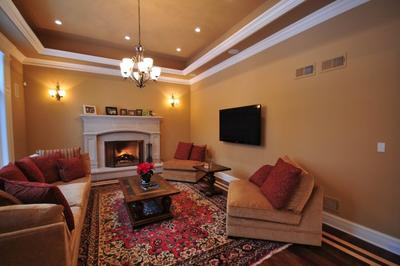In most cases, a designer decorating a room by first selecting wall color. The main color of the room sets the tone for the rest of the room’s decor and influences furniture and fabric pieces. Sometimes, however, that design model is tossed on its head and the paint color is selected from the furniture. If you have a piece of furniture that you cannot part with and want to include in a particular room’s decor, use the tips below to help you select the right color for your room.
Teen Bedroom
Teens are notoriously hard to decorate for unless they are involved in almost every aspect of the design process. Instead of fighting to keep control of the design, let the teen be actively involved. One of the best ways to do this, and to avoid ending up with black walls, is to have him or her select the upholstered furniture for the room. While there will be ample opportunity for your teen to select Gothic black, remind him or her that the wall color will also be determined from the piece. Teens will surprise you be being more selective at that point and will most often choose alternatives to black in. Gray, white, pink and blue are paired most frequently with black, so be prepared to choose one of those colors for the teens bedroom wall paint.
Sophisticated Dining Room
In a sophisticated dining room, the furniture is usually chosen first. Look to the undertones of the wood or the cool sophistication of sleek metal to get inspiration for wall colors. The chair upholstery is also a vital piece of design that must be considered when selecting the paint. For example, if chair upholstery is mainly burgundy and gold, shy away from bright red or sunshine yellow. By working with the pieces that you already have, you will be able to create a dining room that is color coordinated and that is easy on the eyes.
Living Room
Living room furniture can run the gamut in terms of style, color and design. While some homeowners are attracted to paisleys and plaids, others are inspired by warm chocolate browns and antique golds. The wall color should reflect not only the shades in the upholstered pieces, but it should also reflect the tone and formality of the pieces. If the furniture is casual, a lighter, brighter color is more appropriate than a dark, sophisticated color, and vice versa. Coordinating the existing living room furniture with the colors on the walls allows the eye to flow around the room with ease. This ease creates a comfort level that encourages guests to sit and stay for awhile.
Choosing paint color around furniture color is all about coordinating a room to work with the pieces already in existence. It is important to remember that there are many different paint color options, even if the furniture is monochromatic. Be inspired by the pieces you already own and use them to help you create the ideal living space.


